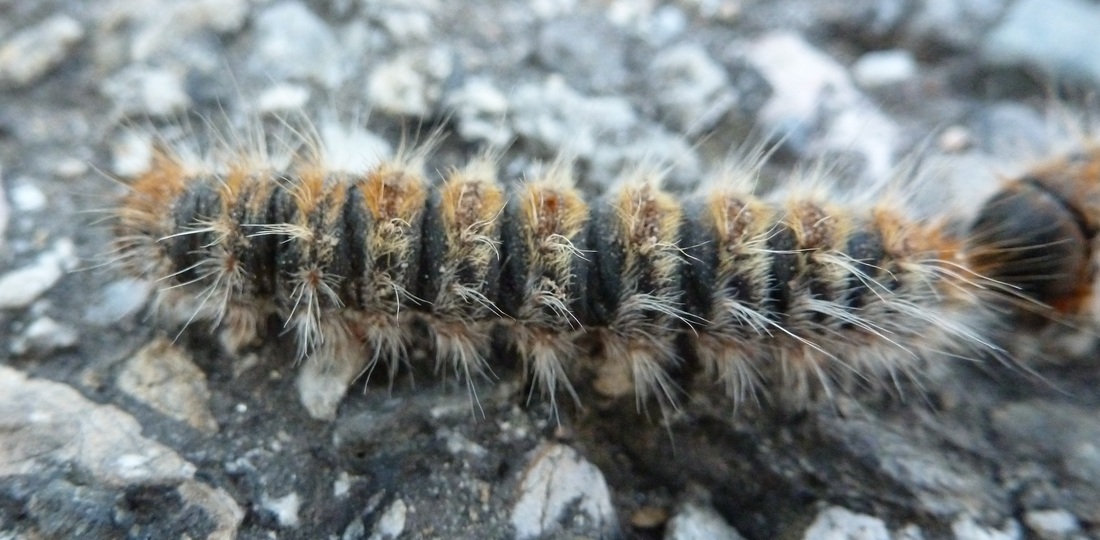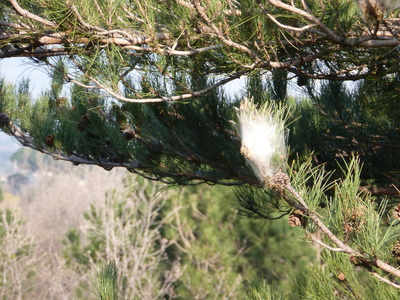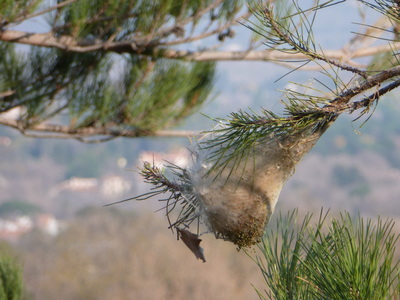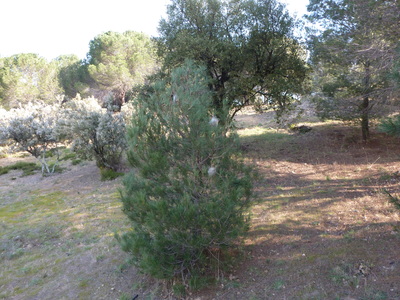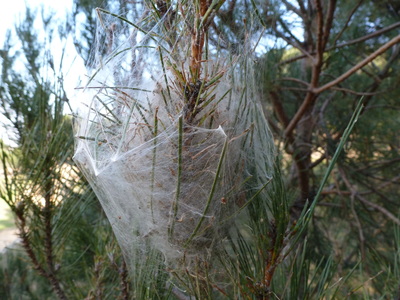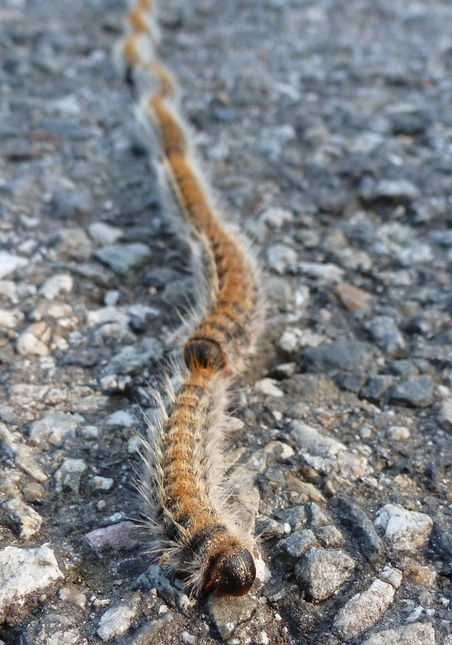It's mid-March and the Pine Processionary caterpillars are on walkabout. Although much seems to be ahead of itself this spring, these beasties are bang on schedule.
Successive generations of caterpillars can also strip and kill a tree, so, given that our hills are mainly oak-clad, thank Goodness we don't have the Oak Processionaries (that have been cropping up in England since 2006). There are relatively few conifers around here. And, of those, our processionaries seem to prefer one variety (sorry - I don't know the name). Local communities usually organise autumn spraying by helicopter, but cutbacks in recent years mean this is now restricted to public areas (such as "The Park", which I mentioned in a previous blog). In our village at least, individuals with conifers in their gardens have to make their own arrangements. A costly prospect, resulting in more felling than treatment.
You start to notice fresh nests each autumn, stuck in the trees like candyfloss. I've always been surprised at how easily they seem to withstand torrential rain, snow and freezing winds. But having done some homework (see link below), I've discovered that they are especially active during cold winter nights! Turns out they're quite fascinating creatures - described as "among the most social" of caterpillars, always knocking around with their siblings.
Come March, when it's warming up, they prepare to pupate. And it's their behaviour at this time that gives them their name. Leaving the nest in orderly, head-to-tail lines, they make their way down the trees. I've only ever seen quite short processions crossing roads and tracks - at a distance they look like fuzzy shoelaces - but they can be up to 300-long. On reaching soft soil they go underground to pupate over the summer. Adult moths emerge in August, females lay egg masses in the trees, and so it starts again.
While I wouldn't want them in my garden, I can't help but respect them.
